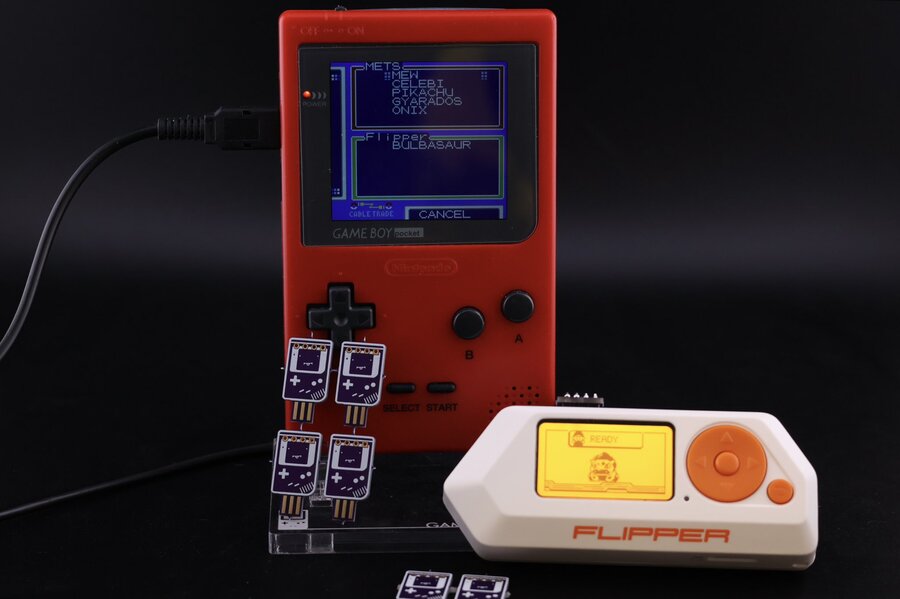
The introduction of trading in the original Game Boy Pokémon games was a watershed moment for many players. Here was the chance to create a physical connection with other fans and exchange digital monsters via a handy link cable interface; it felt like the future in a time when WiFi and Bluetooth were still the stuff of a madman's dreams.
Fast forward to the present day, and the notion of linking hardware with cables seems hilariously old-fashioned – but there's still a fascination with the approach, especially with hardcore Pokémon lovers. The catch, of course, is finding a like-minded individual who has some decent 'mon to trade and has access to the original hardware, but if you're not too fussed about ethics, you might be interested in a cool little device created by @JackvMakes.
The Flipper Zero Pokemon Trading Tool is a tiny little dongle which connects to the open-source Flipper Zero, a "portable multi-tool for pentesters and geeks in a toy-like body" that "loves hacking digital stuff, such as radio protocols, access control systems, hardware, and more."
JackvMakes tool costs $10 (you can also make your own if you so wish) and has an interface which allows it to connect to a Game Boy via a link cable. "Flipper Zero emulates a 'Slave' Game Boy connected to a Game Link Cable to be able to exchange any Pokemon from the First Generation (Red, Blue, Yellow) to a real Game Boy," he explains. "It currently trades a Pokemon based on your choice of Pokemon, Level, Stats and 4 Moves."
A Flipper Zero app is required to work this magic. You can get the full lowdown on how it all works here, but JackvMakes breaks it down in simple terms:
The method used to communicate 2 Game Boys is based on the SPI protocol, which is a very simple serial communication protocol in which a master device communicates with one or more slave devices. In the Game Boy, games store data in an internal shift register that is used to send and receive information. The SPI protocol used by the Game Boy uses the clock signal to indicate when data is being transferred.
The Game Boy link protocol is synchronous and requires the slave device to respond at the same rate as the master device. The master device supplies an 8KHz clock (data transfer rate of 1KB/s). The time window for responding is only ~120μs. However, the slave device has no restrictions and can respond when it receives data. The clock can vary and there is no lower limit.
You might not see the point in cheating at a game that is almost 30 years old, but we're fascinated by the ability of hackers to come up with these workarounds decades after the release of a game – especially when it involves the use of cool gadgets like the Flipper Zero, which has now jumped to the very top of our Christmas list.
Let us know if you're equally interested in this kind of stuff by posting a comment below.



